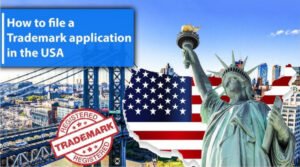In the fast-paced world of business, establishing a unique brand identity is paramount to success. One way to safeguard your brand is by registering a trademark. In the United States, trademark registration offers legal protection and exclusivity over your brand assets, distinguishing your offerings in the marketplace. In this article, we will explore the essential aspects of applying for a US trademark, including costs, the registration process, required materials, and the benefits of securing this vital intellectual property asset.

1. Cost of US Trademark Registration
Obtaining a US trademark involves various costs that vary based on factors such as application type, number of classes, and whether you’re using the TEAS Plus or TEAS Standard application. The US Patent and Trademark Office (USPTO) offers a streamlined TEAS Plus application at a slightly lower filing fee compared to the more flexible TEAS Standard application. As of my last update in September 2021, filing fees ranged from $250 to $350 per class for TEAS Plus and $350 to $450 per class for TEAS Standard. Keep in mind that these fees are subject to change and it’s important to refer to the official USPTO website for the most current information.
2. Registration Process, Validity, Oath, and Renewal
The process of registering a US trademark involves several steps. After determining your eligibility and conducting a thorough search to ensure your desired trademark isn’t already in use, you can begin the application process. This involves preparing and submitting the necessary documents, including details about your brand, its usage, and the classes of goods or services associated with it.
The validity period of a registered US trademark is ten years from the date of registration. To maintain your trademark rights, you must file a Declaration of Use and a Renewal Application between the fifth and sixth year of registration. Subsequent renewals are due every ten years.
3. Required Materials for US Trademark Application
To apply for a US trademark, you need the following materials:
– A clear image or representation of your trademark.
– Information about the applicant (individual, business, or entity).
– A description of the goods and services associated with the trademark.
– Basis for filing (e.g., actual use in commerce or intent to use).
– Filing fee payment.
4. Benefits of Applying for a US Trademark
Registering a trademark offers several compelling benefits:
– Legal Protection: Registration provides legal evidence of your ownership and exclusive rights to the trademark, enabling you to enforce your rights in case of infringement.
– Market Recognition: A registered trademark establishes your brand’s credibility and distinctiveness, making it easier for customers to identify your products or services.
– Expansion Opportunities: Trademarks can be licensed or franchised, creating new revenue streams and expanding your brand’s reach.
– Asset Value: A registered trademark is an intangible asset that can enhance your company’s overall valuation.
– Deterrence: Your registered trademark acts as a deterrent, discouraging others from using similar marks that might confuse consumers.
Using Your Trademark Correctly
To ensure you’re using your trademark correctly and consistently:
– Always use the trademark symbol (? or ?) with your trademark to indicate your ownership.
– Use your trademark consistently and prominently on all branding materials, products, and services.
– Avoid using your trademark as a generic term. For example, “Xerox” should not be used as a synonym for “photocopy.”
– Monitor and enforce your trademark rights to prevent unauthorized use.
In conclusion, applying for a US trademark involves costs, a structured registration process, and required materials. The benefits of obtaining a trademark far outweigh the initial investment, providing legal protection, market recognition, and expansion opportunities for your brand. By using your trademark correctly, you can create a strong and lasting brand identity that sets you apart in the competitive business landscape. Always consult legal professionals and refer to the official USPTO website for the most accurate and up-to-date information on trademark registration.

